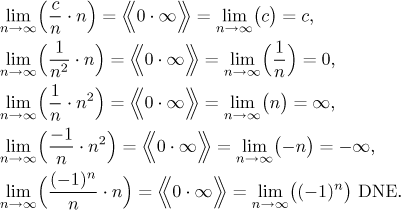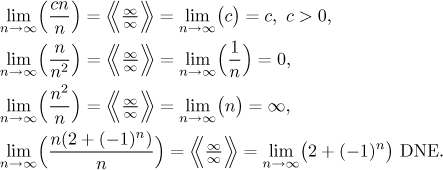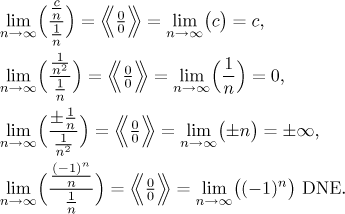
Here we will look closer at all indeterminate expressions. We will illustrate by examples that each indeterminate expression can yield any concievable answer, including any (positive) real number, zero, (minus) infinity, or the limit may not exist.
The examples will be based on the following facts. From
Theory - Limits - Important examples
we know that
In the following examples, c stands for any real number unless noted otherwise.
The indeterminate expression

These examples show that the expression
The indeterminate expression

Again, we see that the expression
The indeterminate expression
![]() :
:

Now we can get anything between zero and infinity, included, and also DNE.
The indeterminate expression
![]() :
:

So we can get anything (real numbers, infinity, DNE) from
![]() .
.
The indeterminate expression

The indeterminate expression

Here c was any real number, so we can make the expression
The indeterminate expression

Here c was any real number, so again,
The indeterminate expression
